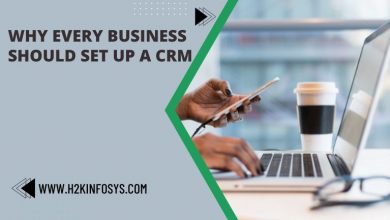What are External Objects in Salesforce?

Businesses can manage their relationships with clients and prospects using the cloud-based customer relationship management (CRM) platform Salesforce. Salesforce provides a range of functions and capabilities to assist companies in streamlining their operations and enhancing client interactions. Among them is External Objects. We shall go into what External Objects are in this blog post and how they might help your organisation. Check out a good Salesforce training with placement to learn more about External Objects.
What are External Objects?
You can connect to data sources outside of your Salesforce org using External Objects in Salesforce. This information might come from many different places, including databases, ERP systems, and other applications. Although the data is stored elsewhere and accessed using Salesforce Connect, External Objects act and look like any other Salesforce object.
You can build real-time connectors between Salesforce and outside data sources using the tool Salesforce Connect. You can get data in real time from other sources without having to save it in Salesforce by utilising Salesforce Connect with External Objects.
In versions 32.0 and later of the API, external objects are supported. Similar to custom objects, external objects keep their record data outside of your Salesforce organisation. Consider the possibility that you have data that is housed in an enterprise resource planning (ERP) system. You can use external objects to access the data in real-time via web service callouts rather than duplicating it inside your organisation.
With Files Connect and Salesforce Connect, external items are accessible. In your Salesforce organisation, each external object is connected to a specification of an external data source.
How to reach an external system is specified by an external data source. In order to access data that is kept outside of your Salesforce organisation, Salesforce Connect employs external data sources. To access external data sources and external content systems, use Files Connect. Your users and the Lightning Platform can interact with the external data and content through the associated external objects that are provided by external data sources.
External objects always represent the most recent state of the external data by accessing record data as needed. Since you don’t need to maintain a copy of that data in Salesforce, maintaining data synchronisation doesn’t consume unnecessary storage space or resources.
When you need to use only a little bit of data at a time and have a lot of data that you can’t or don’t want to store in your Salesforce organisation, external objects are the best option.
How are External Objects utilised?
External Objects connect to external data sources using the OData 2.0 or OData 4.0 protocol. A RESTful protocol called OData makes it possible to build and use RESTful services. You can use it to develop a common access and manipulation method for data from several sources.
To connect to external data sources, external objects employ external data sources. A configuration that specifies the connection to an external data source, such as a database or web service, is known as an external data source. The authentication procedure, the endpoint URL, and the data mapping between the external data source and Salesforce are all specified by external data sources.
After the external data source has been built, you can create external objects that correspond to its tables or views. Like any other Salesforce object, External Objects can be created using the Salesforce Object Manager. Moreover, you can designate columns in the external data source as custom fields on External Objects.
What are the benefits of External Objects?
Using external objects in Salesforce has several advantages. Here are some of the most important ones:
- Real-time data access: You can obtain real-time data from outside sources using External Objects without having to store it in Salesforce. This implies that you can always get the most recent data in your Salesforce org.
- Reduced data storage: You can store fewer data in Salesforce since External Objects let you access data from outside sources without having to store it there. This can lower the amount of data you need to keep and save you money on storage fees.
- Improved performance: The quantity of data that has to be saved in Salesforce can be decreased by using external objects, which can enhance efficiency. This can speed up query execution and cut down on the time needed to retrieve data.
- Integrating with other systems: You can integrate with external systems via External Objects, including databases, ERP systems, and other applications. By doing so, human data entry may be unnecessary and data consistency may be improved.
- Security: Salesforce objects and external objects both use the same security paradigm. This implies that, like any other Salesforce object, you can manage access to External Objects using profiles and permission sets.
Conclusion
You may connect to other data sources and obtain real-time data in your Salesforce org by using the robust External Objects feature in Salesforce. They can aid in performance enhancement, data storage reduction, and system integration. You may enhance client interactions, decrease the need for human data entry, and increase data consistency with External Objects. It is absolutely worthwhile to use External Objects if you’re seeking a solution to connect to external data sources in Salesforce. You can learn it online via the Salesforce training with job placement platform.





